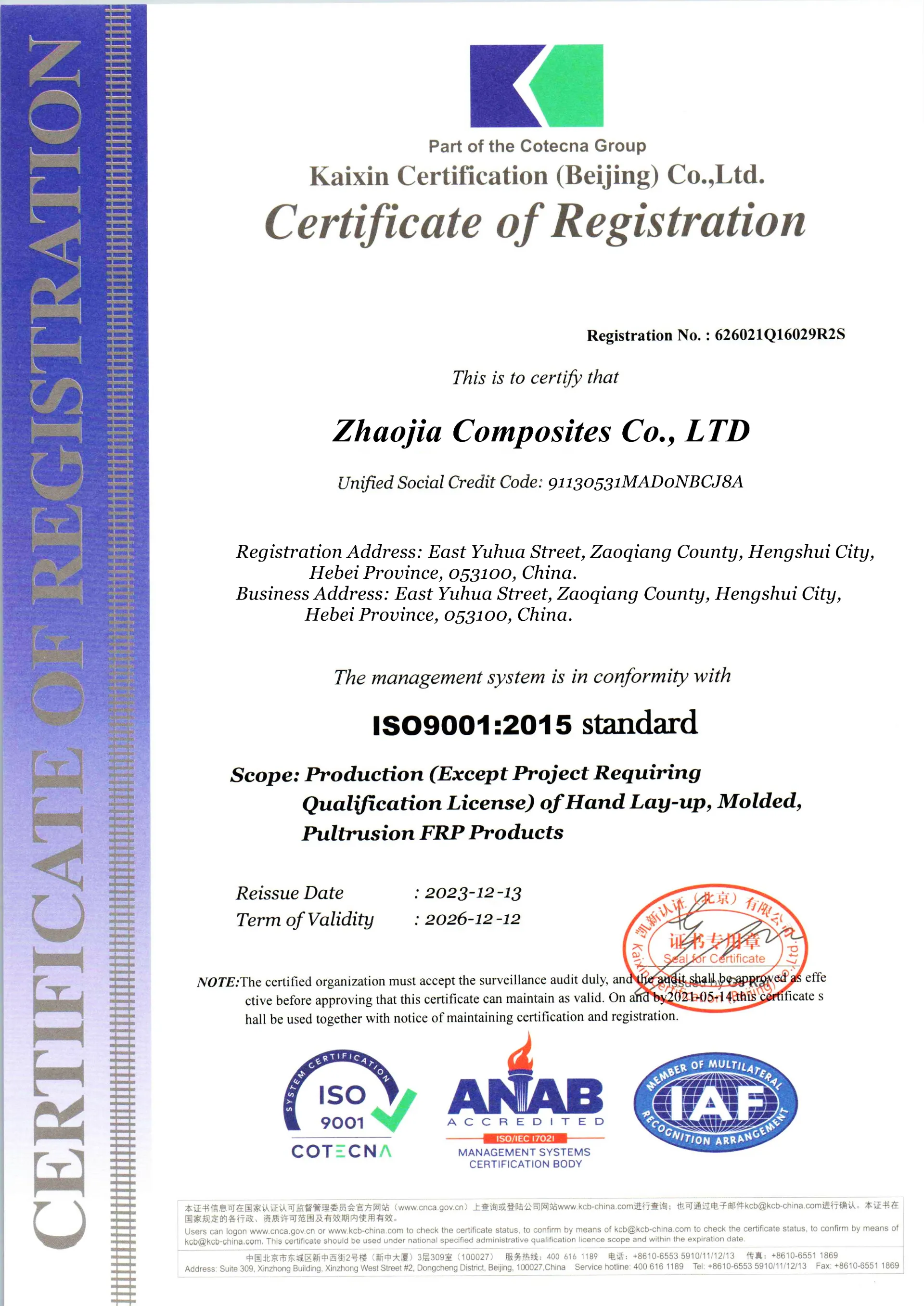loading...
- No. 9, Xingyuan South Street, Dongwaihuan Road, Zaoqiang County, Hengshui, Hebei, China
- admin@zjcomposites.com
- +86 15097380338
- Welcome to visit our website!
Enhanced Durability of FRP Bridge Deck Panels for Long-lasting Infrastructure Solutions
The Use of FRP Bridge Deck Panels A Modern Solution for Infrastructure
In the realm of civil engineering, the need for durable, lightweight, and corrosion-resistant materials has led to significant innovations in bridge construction. One such advancement is the use of Fiber Reinforced Polymer (FRP) bridge deck panels. As infrastructure ages and the demand for efficient transportation grows, FRP materials offer a modern solution that meets the challenges of contemporary engineering.
Understanding FRP Materials
FRP is a composite material made from a polymer matrix reinforced with fibers, typically glass, carbon, or aramid. These materials are renowned for their high strength-to-weight ratio, significant resistance to environmental factors, and ease of fabrication. The combination of these properties makes FRP an increasingly popular choice in various engineering applications, particularly in the construction of bridge decks.
Advantages of FRP Bridge Deck Panels
1. Lightweight One of the primary characteristics of FRP materials is their lightweight nature. Compared to traditional concrete or steel, FRP bridge deck panels significantly reduce the overall weight of the bridge structure. This feature allows for easier handling, transportation, and installation, which can decrease construction time and labor costs.
2. Corrosion Resistance Bridges are often exposed to harsh environmental conditions, including moisture and de-icing salts. Traditional materials such as steel and concrete are susceptible to corrosion and deterioration over time. FRP materials exhibit exceptional resistance to chemical attacks, significantly extending the lifespan of the bridge deck and reducing maintenance requirements.
3. Durability The structural integrity of FRP panels under diverse loading conditions is another advantage. They maintain their performance under various stresses, including heavy traffic loads and dynamic forces. Additionally, FRP's inherent resistance to fatigue makes it an ideal choice for bridge decks that must endure repeated stress cycles over many years.
4. Design Flexibility The versatility of FRP allows for innovative design solutions. The material can be molded into various shapes and sizes, enabling engineers to create lightweight and complex geometries that would be challenging to achieve with conventional materials. This flexibility can lead to aesthetically pleasing designs while still meeting stringent engineering specifications.
frp bridge deck panels

5. Rapid Installation The prefabrication process of FRP panels facilitates rapid installation on-site. Engineers can manufacture panels off-site according to project specifications and then transport them for quick assembly, minimizing traffic disruption and reducing the overall construction timeline.
Applications of FRP Bridge Deck Panels
FRP bridge deck panels have found applications in various bridge types, including pedestrian walkways, vehicular bridges, and even railway bridges. Many notable projects have successfully implemented these materials, showcasing their capabilities in real-world scenarios. For instance, some transportation authorities have used FRP decks in rehabilitation projects, replacing outdated and deteriorating structures with modern, efficient alternatives.
Challenges and Considerations
Despite their many advantages, there are challenges associated with the widespread adoption of FRP bridge deck panels. Cost can be a significant factor, as the initial investment for FRP materials may be higher than traditional options. However, when considering long-term maintenance and lifecycle costs, FRP often proves to be more economical over time.
Furthermore, while engineers are becoming increasingly familiar with FRP applications, there remains a need for more substantial research and standardized design codes to ensure safety and reliability in various conditions. Continued advancements in manufacturing techniques and material performance will likely address these issues over time.
Conclusion
FRP bridge deck panels represent a significant step forward in the field of civil engineering. Their lightweight, durable, and corrosion-resistant properties make them an attractive option for modern bridge construction and rehabilitation. As the infrastructure needs continue to evolve, embracing innovative materials like FRP will be crucial for building efficient, sustainable, and resilient transportation systems. With ongoing research and development, the future of FRP in bridge applications looks promising, paving the way for safer and more enduring infrastructure solutions.
-
Transform Your Spaces with FRP Grating SolutionsNewsNov.04,2024
-
The Versatility and Strength of FRP RodsNewsNov.04,2024
-
The Excellence of Fiberglass Water TanksNewsNov.04,2024
-
The Benefits of FRP Grating for Your ProjectsNewsNov.04,2024
-
Elevate Your Efficiency with FRP Pressure VesselsNewsNov.04,2024
-
Welcome to the World of FRP Pressure VesselsNewsOct.12,2024
-
Unveiling the Future of Filtration: Why FRP Filter Vessels are a Game ChangerNewsOct.12,2024
